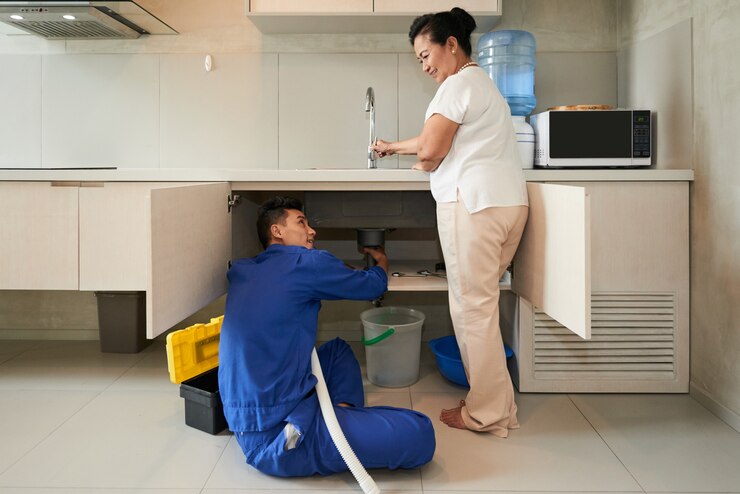Dealing with a clogged drain can be a real nuisance. Whether it’s the water not draining as quickly as it should or standing water causing unpleasant odors, these issues can disrupt daily routines and potentially lead to bigger plumbing problems down the road. Nobody wants to wade through water pooling around their feet during a shower or wait endlessly for the sink to empty. Fortunately, there are practical solutions you can try before needing to call in the professionals.
Addressing drain clogs promptly is necessary to keep your plumbing system in good condition and avoid costly repairs. Ignored clogs can spill into other areas, damaging structures and even leading to structural issues. By learning a few simple techniques, you can often solve the problem yourself without the need for specialized tools. Let’s explore the common causes of these blockages and some effective ways to handle them at home with confidence.
Common Causes of Clogged Drains
Understanding why drains clog can help you prevent it from happening again. Here are a few typical causes:
- Hair and Debris: Hair is one of the most common culprits. It sneaks down drain holes, tangling with other debris and forming clumps that block the flow of water. This is particularly common in bathroom sinks and showers.
- Soap Scum and Grease: Over time, soap can build up inside pipes, particularly when mixed with hard water. In kitchen sinks, grease from cooking can solidify, causing significant restrictions.
- Foreign Objects: Sometimes, items like small toys, cotton swabs, or toothpaste caps find their way into drains, creating unexpected barriers.
Each of these issues requires its own approach to clearing it up. Understanding what might be causing your specific problem is the first step in figuring out how best to fix it.
Simple Tools You Can Use
Handling a clogged drain doesn’t always require calling for help right away. With some basic tools, you can attempt to clear many clogs efficiently. Here are three things you might already have around the house that can help:
1. Plunger: Ideal for sinks and tubs, a plunger can create enough pressure to dislodge the blockage. Make sure to cover any overflow openings in sinks for better suction.
2. Drain Snake: This flexible tool can reach into the pipe, grabbing and clearing away stubborn clogs like hair or gunk.
3. Wire Hanger: If you don’t have a drain snake, a simple wire hanger can often suffice. Straighten it out with a small hook on the end to pull out the blockage.
These tools allow you to tackle the problem directly and efficiently, often solving the problem without any additional help. Just remember to be gentle to avoid damaging the pipes. Now that you know the culprits and have the right equipment, you’re ready to try some do-it-yourself unclogging methods right in the comfort of your home.
Step-By-Step DIY Methods
Now that you’re equipped with the tools and know the likely troublemakers behind your clogged drain, let’s dive into some practical methods you can try at home. These easy steps will guide you through resolving the issue:
1. Using a Plunger: Begin by creating a tight seal over the drain with a plunger. Push down and pull up repeatedly to create suction. This movement helps dislodge anything causing a blockage. For sinks, cover any overflow holes to maximize pressure.
2. Baking Soda and Vinegar Solution: An old-school remedy that works wonders is the combination of baking soda and vinegar. Pour half a cup of baking soda down the drain, followed by an equal amount of vinegar. Cover the drain with a plug or cloth to allow the chemical reaction to work its magic for about 15 minutes, then flush with hot water.
3. How to Use a Drain Snake Effectively: Insert the snake into the drain, turning the handle to grip onto the blockage. Gently pull out the snake, along with the debris, repeating if necessary until the drain flows freely.
4. Pouring Boiling Water: Sometimes, a kettle of boiling water is enough to dissolve minor blockages caused by soap scum or grease. Pour the water slowly to avoid splashes and ensure it reaches the blockage.
These methods can often resolve clogs quickly and allow water to flow smoothly again. With a bit of persistence, you’ll handle many clogs independently.
When to Call a Professional
Despite your best efforts, some clogs just won’t budge. So, how do you know when it’s time to bring in a professional service? Here are a few signs:
- Persistent Clogs: If you’ve tried multiple methods and the water still refuses to budge, it might be time to call in experts.
- Foul Odors: Lingering smells from the drain could indicate a deeper issue that requires professional attention.
- Recurring Blockages: A drain that clogs frequently, even after being cleared, may have an underlying problem that needs expert investigation.
Professionals have the tools and experience to tackle severe blockages, ensuring your plumbing is in top condition.
Wrapping Up: Keeping Your Drains Clear
With these do-it-yourself methods, you’ll now be better prepared to handle clogs on your terms. Regular maintenance is key to preventing future issues. Here are some simple strategies to keep your drains clear:
- Clean drain covers routinely to catch hair and debris before they enter the pipes.
- Avoid pouring grease or food scraps down the kitchen sink.
- Use a monthly baking soda and vinegar flush to help maintain clear pipes.
By being proactive, you’ll ensure that your drains remain free-flowing and reduce the chance of troublesome clogs. Simple habits make all the difference in maintaining a stress-free plumbing system in your home.
Don’t let stubborn clogs disrupt your daily life any longer. If you’re ready for a hassle-free plumbing experience, let Midlothian Plumbing help restore the flow in your home. Whether you need advice or want to unclog a drain, our team is just a call away. Enjoy peace of mind knowing your plumbing is in expert hands.


